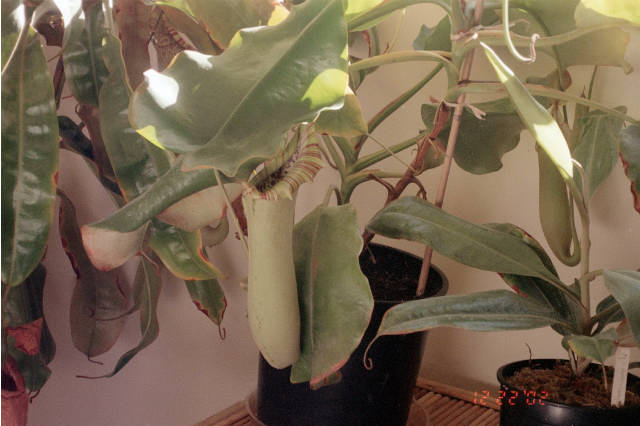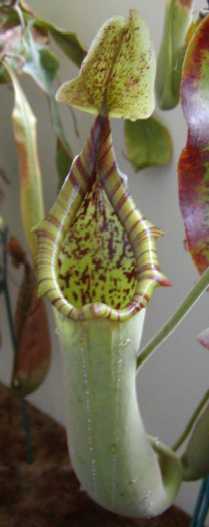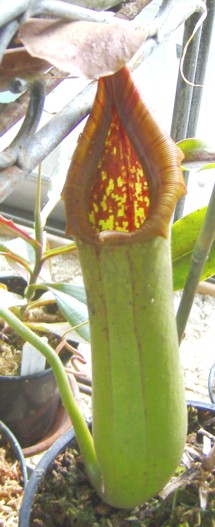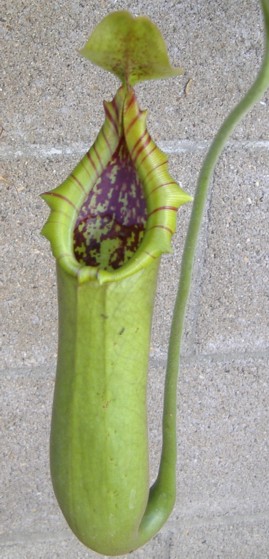
N.truncata growing in the bedroom

N. truncata "lowland"
purchase date: 9 / 92
arrived as a size 3
plant origin: John De Kanel
photo taken: 8 / 03

N.
truncata highland (photo taken: 11 / 06)
N. truncata
"highland"
purchase date: 11 / 06
arrived as a large plant
plant origin: Borneo Exotics
photo taken: 10 / 07
Nepenthes truncata is a large pitchering Nepenthes that is fairly spectacular.
The leaves are very large and truncated, or kind of cut off. You can see
in the top picture how wide and spread out they are. My lowland N. truncata plant I got in
1992. It was one of my first Nepenthes and I grew this guy in a hot box
as a terrarium plant at the time. It grew very stout and stocky and put
out beautiful pitchers quickly. Unfortunately I had to move and break down
my terrarium. I kept this guy and grew him as a houseplant under a sunny
window like in the photos. N. truncata was truly one of my first Nepenthes
to grow this way because I had no other way to grow the large plant at
the time. It pitchers up occasionally but it would do much better in warmer,
humid, sunnier conditions. The plant has multiple growth points and several feet
across. Someday I hope to get it into optimal conditions so it will pitcher
every time. This is also an extremely popular species to hybridize with. Exotica
Plants has put out countless hybrids using N. truncata as a parent.
The other
N. truncata variety I grow outdoors is the highland version from Borneo Exotics.
I must admit that I've had a tough time establishing this plant. First offerings
from seed several years ago were quite expensive. The most valuable is the black
variety that is very limited in some collections that came from the original
seed grown specimens. Now Borneo Exotics has many clones in tissue culture and
large plants are relatively inexpensive. This N. truncata grows best as an
intermediate than a highlander. I couldn't provide enough light indoors so I've
been growing them outdoors. The latest photo shows a highland variety that looks
very much like my lowland in coloration. When I got the plant, I don't recall
this kind of coloration. Definitely it had more red in it. Maybe with more
exposure to the sun, the pitchers may redden up more. They seem to adapt to my
outdoor conditions but definitely detest my winter low
40's. I'll have to move them indoors to weather them through the winter so they
don't stress. Most other growers have no problems growing the highland version
and there's some nice photos of their plants in the forums.
RATING
lowlander / intermediate / highlander? 230m-1300m
Cultivation: easy under lowland conditions, slow to moderate
grower for the highland clone in intermediate temperatures
Market availability: size 3, rooted cuttings,
and large specimen plants; very common
Species variability: typical, "reddish leaves",
highland variety, highland "black", and Exotica Plants many clones
$ / size: inexpensive to collector's plant; $15.00
to over $100.00 for large specimen plants; large highland varieties are more expensive
Cuttings: none available for trade
Sex: male (lowland clone)



